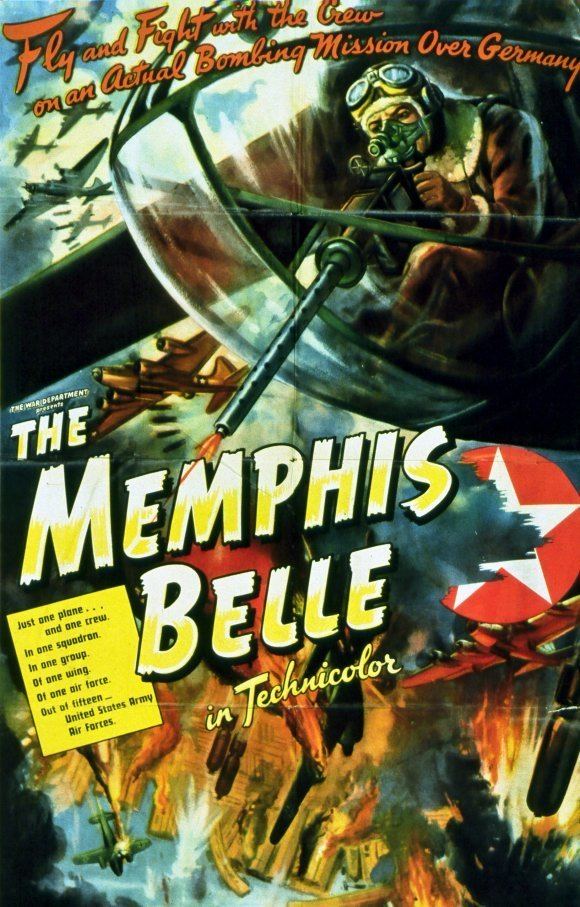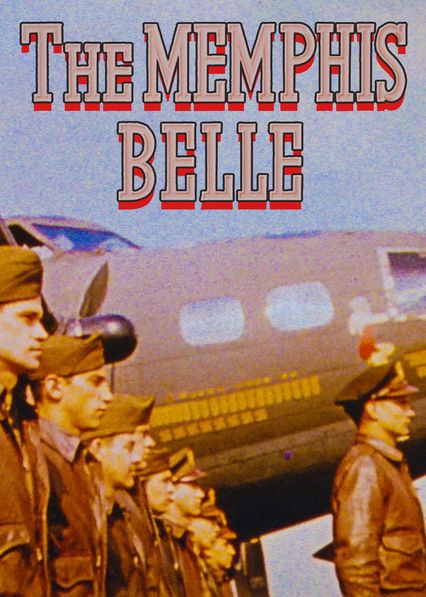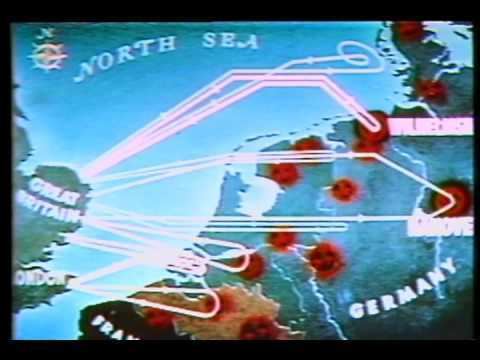Memphis Belle: A Story of a Flying Fortress
7.6 /10 1 Votes7.6
7.3/10 Top Documentary Films Sequel Target for Today Country United States | 7.4/10 IMDb 83% Rotten Tomatoes Genre Documentary, History, War Duration Language English | |||||||||||||||||||||||||||||||||
 | ||||||||||||||||||||||||||||||||||
Cast Robert Morgan (Himself (Pilot)), Vince Evans (Himself), Jacob L. Devers (Himself (commander, European theatre)), Ira C. Eaker (Himself (commander, 8th Air Force)), Haywood Hansell (Himself (USAAF)), Technical Sergeant Robert J. Hanson (Himself (radio operator on The Memphis Belle))Release date 1944 (1944) Similar movies Related William Wyler movies | ||||||||||||||||||||||||||||||||||
The memphis belle a story of a flying fortress 1944
The Memphis Belle: A Story of a Flying Fortress is a 1944 documentary film which ostensibly provides an account of the final mission of the crew of the Memphis Belle, a Boeing B-17 Flying Fortress. In May 1943 it became the first U.S. Army Air Forces heavy bomber to complete 25 missions over Europe and return to the United States.
Contents
- The memphis belle a story of a flying fortress 1944
- The memphis belle a story of a flying fortress 1944 documentary boeing b 17 21100 hd
- Cast
- Production
- Reception
- Impact
- 1990 fictionalized version
- Home video
- References

The dramatic 16 mm color film of actual battles was made by three cinematographers, including First Lieutenant Harold J. Tannenbaum. Tannebaum, a veteran of World War I, was killed in action during the filming when the bomber he was in was shot down over France on April 16, 1943.

The film was directed by Major William Wyler, narrated by Eugene Kern, and had scenes at its station, RAF Bassingbourn, photographed by Hollywood cinematographer Captain William H. Clothier. It was made under the auspices of the First Motion Picture Unit, part of the United States Army Air Forces. The film actually depicted the next to last mission of the crew (see below) on May 15, 1943, and was made as a morale-building inspiration for the Home Front by showing the everyday courage of the men who manned these bombers.

The memphis belle a story of a flying fortress 1944 documentary boeing b 17 21100 hd
Cast

The crew on the missions filmed included:
Production

Morgan's crew had not flown all of its missions together. Captain Verinis had originally been Morgan's co-pilot at the beginning of their combat tour but had become a "first pilot" (aircraft commander) in his own right on December 30, 1942, after which he flew 16 missions as commander of a replacement B-17 he named Connecticut Yankee after his home state. Verinis finished his tour two days before the rest of Morgan's crew.

Nor was Morgan's crew the one originally selected by Wyler for filming. He had been following Captain Oscar O'Neill (whose bomber was named Invasion 2nd) of the 401st Bomb Squadron until O'Neill's B-17 and five others of the 401st were shot down over Bremen, Germany, on April 17, 1943, at that time the most costly mission yet for the Eighth Air Force. Morgan was then selected and his crew re-united by the Eighth Air Force to complete its tour together and to return to the United States for a war bond drive. Wyler also informed Morgan when asked that, had the Memphis Belle been shot down on the crew's final mission, Wyler had a backup crew working with another B-17 about to finish its 25 missions, Hell's Angels of the nearby 303d Bombardment Group. Hell's Angels actually completed 25 missions first, on May 13 (the date of the 19th for the Memphis Belle).
Morgan states in his memoirs that he was approached by Wyler in late January 1943 after his crew's eighth mission. Wyler told Morgan he wanted to film the Memphis Belle and her crew because of "a certain mystique" to the aircraft's nickname, and that Morgan's reputation as a pilot meant that Wyler would be "in the center of the action...(with) a pretty good chance of coming back." Morgan agreed after assurances from Wyler that the film crew would not interfere with operation of the airplane in combat in any way.
The first mission flown in filming was not aboard the Memphis Belle, but aboard the B-17 Jersey Bounce on a February 26, 1943, mission to Wilhelmshaven, Germany . The Memphis Belle was being repaired after severe battle damage incurred on February 16. The mission experienced heavy German fighter attacks and two of the 91st group's B-17s were shot down. Despite the hazards, Wyler filmed at least six more combat missions with Morgan's crew, not all of them aboard the Memphis Belle, using a set-up that placed mounted cameras in the nose, tail, right waist, and radio hatch positions. The camera setup is documented in the photograph of the Bad Penny, which Morgan and Wyler flew on a mission to Antwerp on April 5, 1943.
The 16 mm color film used did not include sound, and this was added later in Hollywood. The original crew, during their war bonds drive in the United States, made typical appropriate comments to each other while watching the silent movie in a studio. The result was difficult to distinguish from real combat recordings.
King George VI (wearing the uniform of a Marshal of the Royal Air Force) and his consort Queen Elizabeth are seen congratulating the crew on May 18, after Morgan's final mission but the day before that of the B-17.
Reception
In The New York Times review of the documentary, critic Bosley Crowther praised the film as "A thorough and vivid comprehension of what a daylight bombing is actually like for the young men who wing our heavy bombers from English bases into the heart of Germany..."
Impact
In 2001, the United States Library of Congress deemed the original version "culturally significant" and selected it for preservation in the National Film Registry.
The Memphis Belle aircraft is now preserved at the National Museum of the United States Air Force at Wright-Patterson AFB, near Dayton, Ohio.
1990 fictionalized version
A fictionalized version of the story, Memphis Belle, was produced in 1990 by David Puttnam in England. It was co-produced by Catherine Wyler, the daughter of William Wyler, directed by Michael Caton-Jones and starred Matthew Modine and Eric Stoltz.
Home video
In 2010, the film was released in high definition on Blu-ray disc by Periscope Film LLC. It is also included with the 2014 Blu-ray release of the 1990 Memphis Belle.
References
Memphis Belle: A Story of a Flying Fortress WikipediaMemphis Belle: A Story of a Flying Fortress IMDbMemphis Belle: A Story of a Flying Fortress Top Documentary FilmsMemphis Belle: A Story of a Flying Fortress Rotten TomatoesMemphis Belle: A Story of a Flying Fortress themoviedb.org
